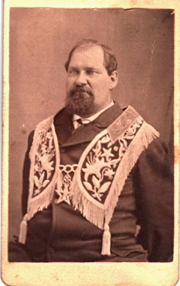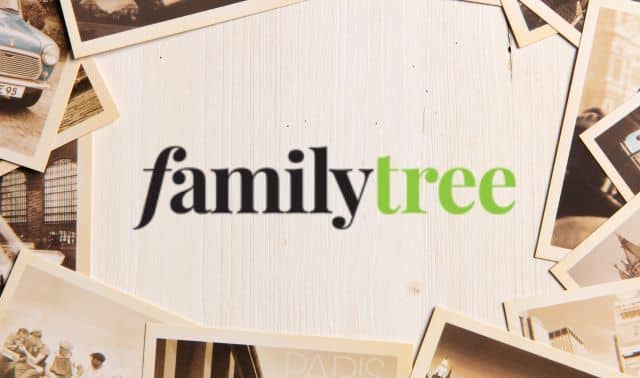Sign up for the Family Tree Newsletter Plus, you’ll receive our 10 Essential Genealogy Research Forms PDF as a special thank you!
Get Your Free Genealogy Forms
"*" indicates required fields
Pam Rolland is working her way through family albums in the possession of her aunt. She reports that she’s been able to date and identify many of the pictures in them, but still has a few mysteries.
This is one of them. It was in an album with members of the Roberts family.
That particular branch of the family moved from North Carolina to Virginia then to Missouri, Arkansas and finally to Oregon.
Look closely at the man’s accessory. The clasp holding it on is three interconnecting rings.
That is a symbol of the Independent Order of Odd Fellows, a group I’ve written about in previous columns. You can see these rings in Fraternal Membership Clues and in Fraternal Insignia. They stand for Friendship, Love and Truth.
The Odd Fellows are a fraternal organization that believes in charitable pursuits. You can read more about the history of the group and their mission on Wikipedia.
Photos of men in fraternal symbolism can be difficult to decipher. There is no comprehensive guide to these symbols. Unless the accessories are easy to identify, tracking down what your ancestor is wearing requires extensive research into their lives.
- Obituaries often reveal membership in these “secret” groups.
- In the 19th century, a majority of men belonged to a fraternal organization. They were professional networks and offered support for members in need.
- City directories are a great resource when trying to determine which groups had chapters in the area in which your ancestor lived. There is usually a list of local organizations in directories.
- Many of these nineteenth century groups still exist so a quick Google search can provide you with contact information.
Complicating Rolland’s search for this man’s identity is the number of places the family lived. In order to narrow down the possibilities she’ll have to identify where this man might have lived in the 1880s (based on his attire and the card stock) and who in the family tree might be the right age to be him.
Solve your family photo mysteries with these books by Maureen A. Taylor:
ADVERTISEMENT






